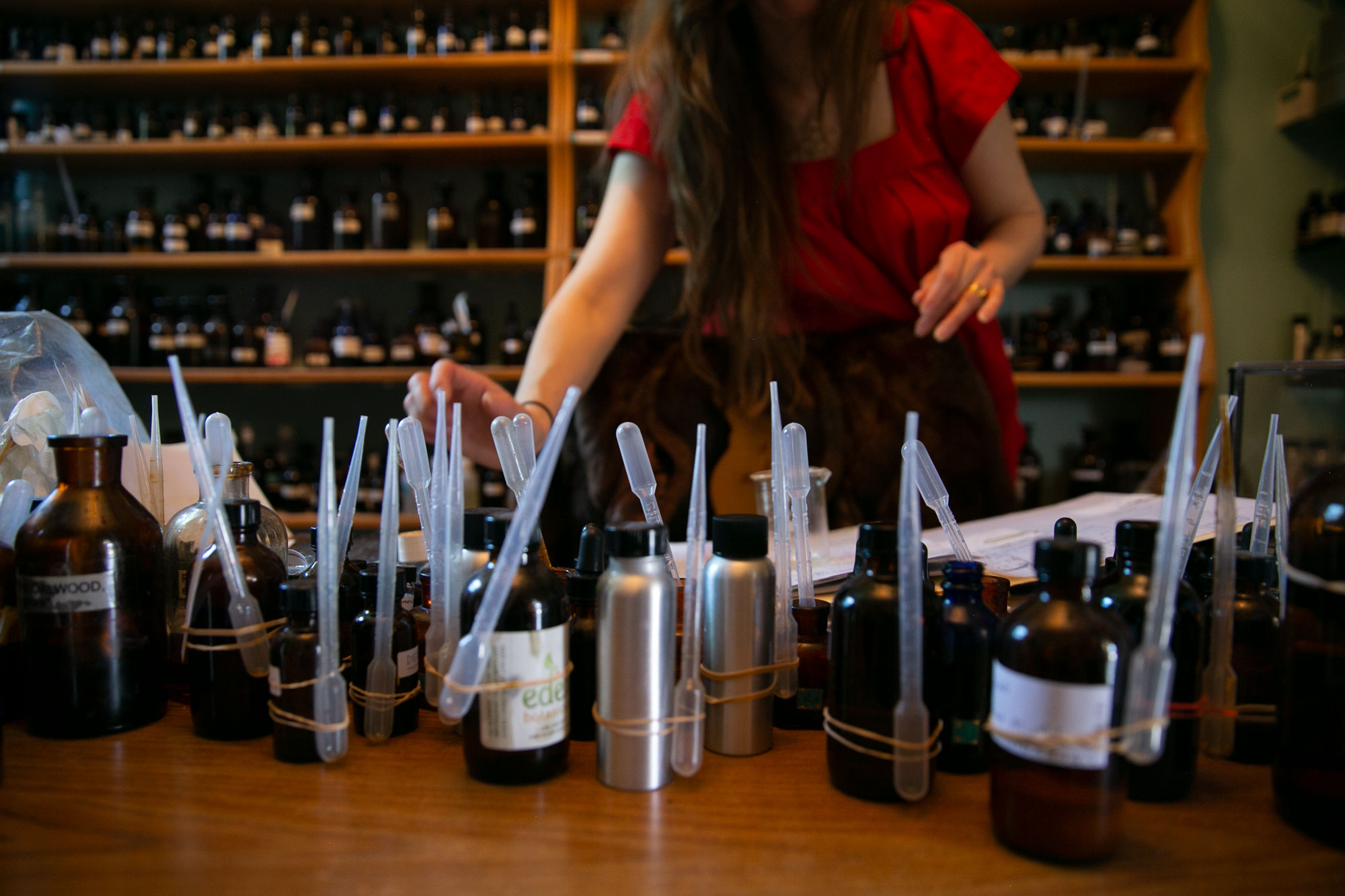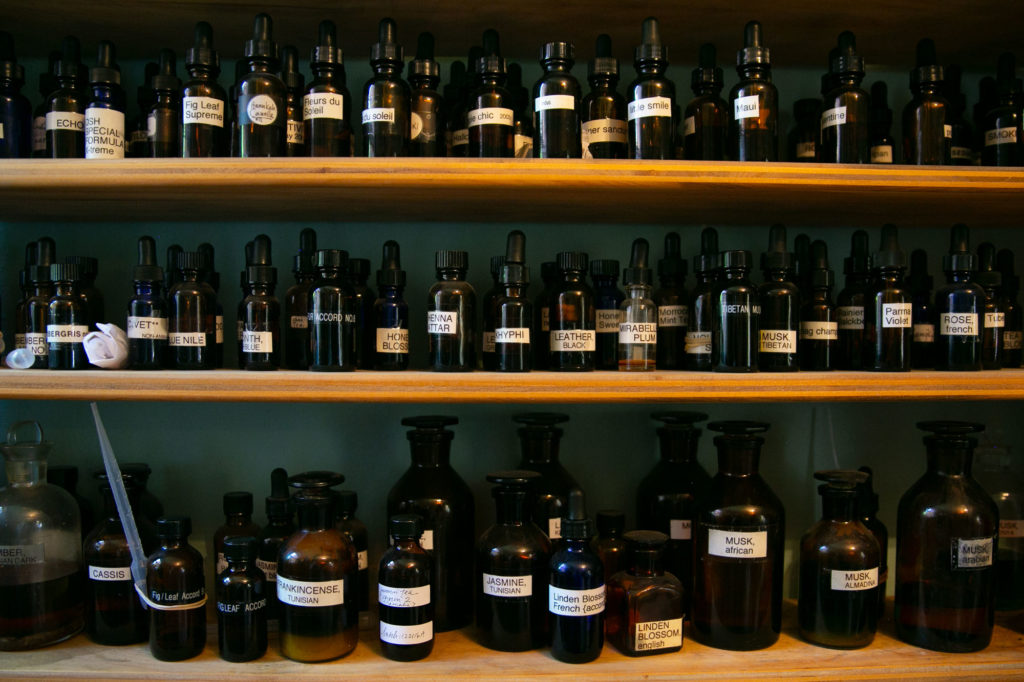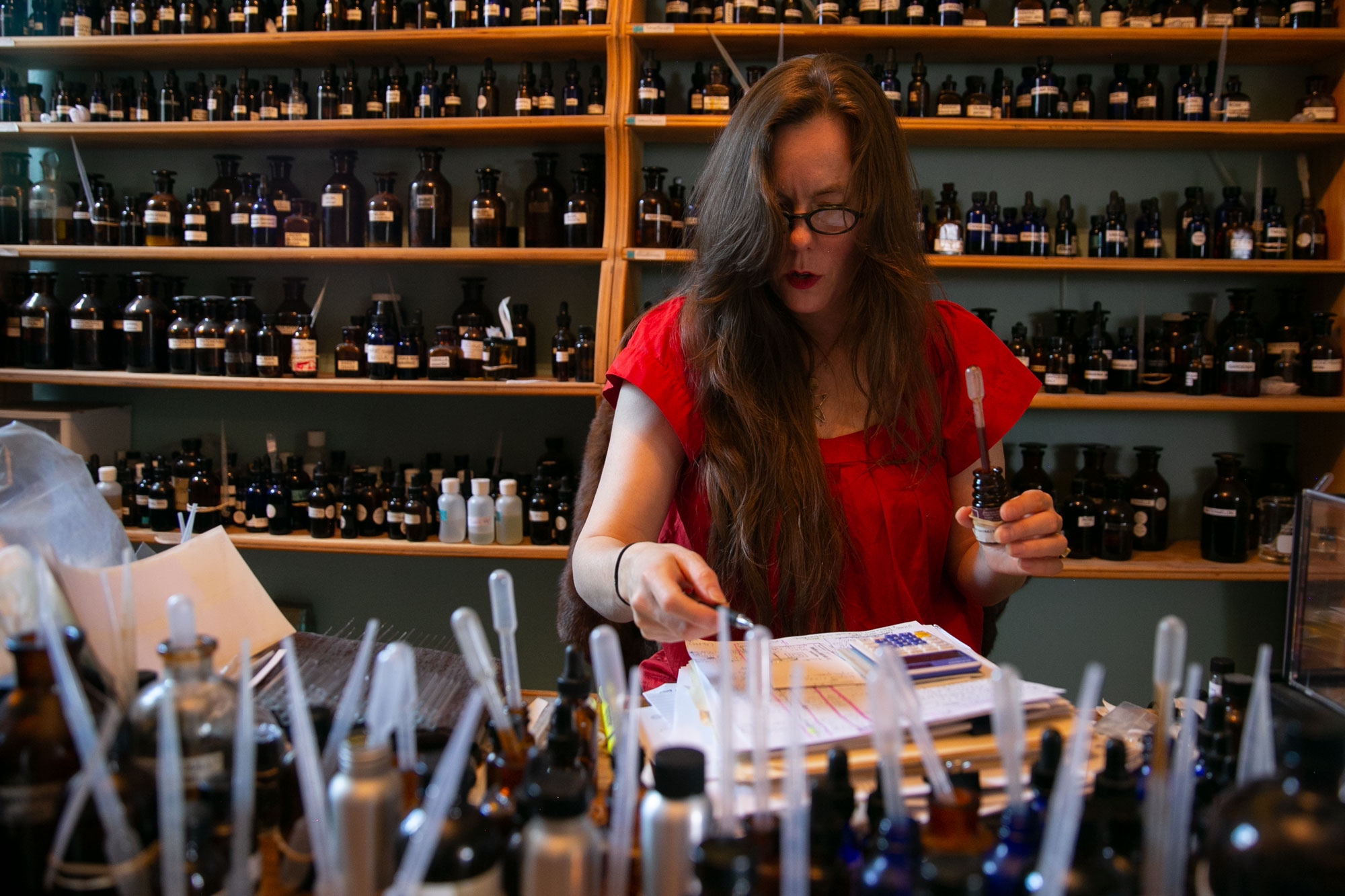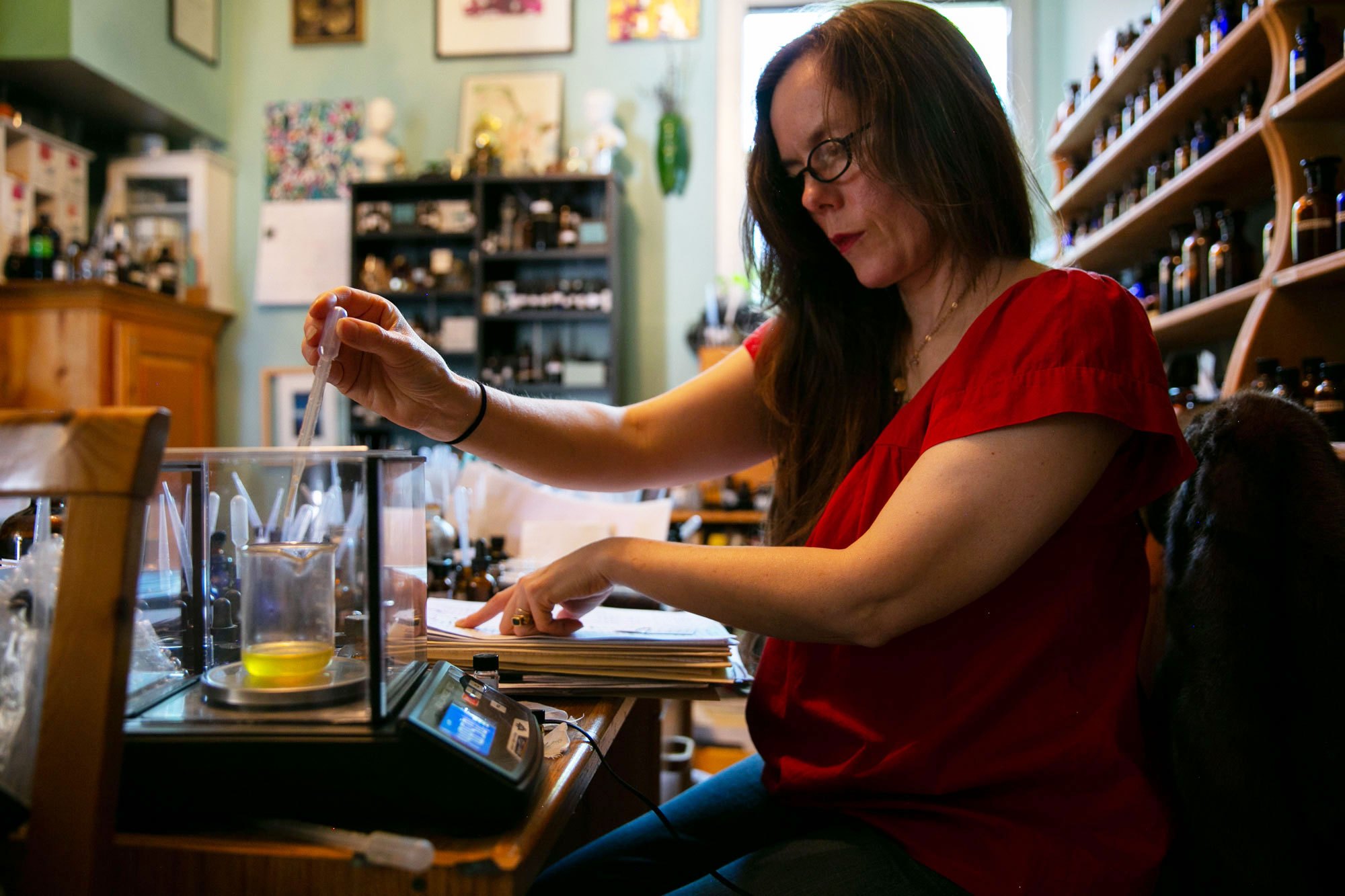So, what does Colorado smell like?
(Get all your very original, I’m sure, weed jokes out of the way in this space. When you’re ready, continue reading below.)
If your mind wandered to the woodsy scents you pick up on a hike, you’re not alone. Boulder perfumer Dawn Spencer Hurwitz focused on the variety of smells she experiences on the trail up the Flatirons when she crafted a new perfume, appropriately called Colorado.
One of her biggest concerns? Making sure it didn’t smell like Pine Sol.

“I was really trying to evoke the entirety of walking through a Colorado meadow into the forest. Because there are grasses and fresh air and other deciduous trees,” Hurwitz said. “I really focused on the contrast and complement of those elements next to the Colorado blue spruce that I used and other pine kind of notes.”
The ingredients list for the perfume Colorado is three pages long. There’s also Ponderosa pine bark, lemon essential oil and leaf alcohol, the smell you pick up when your lawn is freshly mown.
The scent won Hurwitz an international honor called the Golden Pear from the Art and Olfaction Awards in May in Amsterdam.
She developed the limited run (just 50 bottles, all sold out) for a company called American Perfumer in Louisville, Ky. But she still has samples of Colorado as well as dozens of other artisan perfumes at her shop in Boulder.
 Alex Scoville/CPR News
Alex Scoville/CPR NewsJust past the cash register is her workspace, a densely packed room of brown vials with labels like “musk – tibetan” and “fig leaf supreme,” more plastic pipettes than a high school chem lab and notebooks upon notebooks containing her scent recipes.
On a warm Tuesday in June, Hurwitz pulled out a dozen of those vials according to a list of ingredients on grid paper. That afternoon she was editing a new perfume she was developing that was meant to evoke a whiskey cocktail (orange and liquor scents were part of the mix). The process was very similar to that during the development of the Colorado scent.
“I get an idea and I pull out absolutely every aromatic I can think of that could possibly be a part of it. And then I start to smell all those pieces and find harmonies and do an editing process,” Hurwitz said. “And even with editing, it turned out to be, you know, a three-page design, very complex design.”
 Alex Scoville/CPR News
Alex Scoville/CPR NewsHurwitz uses a scale that can measure precisely to the milliliter, a weight so light the wind coming from her window can change it. She keeps a close eye on the fluttering number as she uses pipettes to administer everything from a steady stream of a scent to just a few drops.
Also lining the crowded wall space of her workshop are abstract paintings she’s made. Before taking on perfuming, she was primarily a visual artist. Hurwitz is synesthetic, and her work often depicts how smells appears visually to her. She also thinks of smell like a story, not a static experience.
“From the very beginning, I’ve been interested in storytelling through aromatics and through wearing perfumes. So you might think of it more like a song, where it has a starting point and then you move into it and you can groove with it. And then at some point it ends,” she said. “And if you want to enjoy it again, you reapply and you sort of hear the aromatic song again.”













